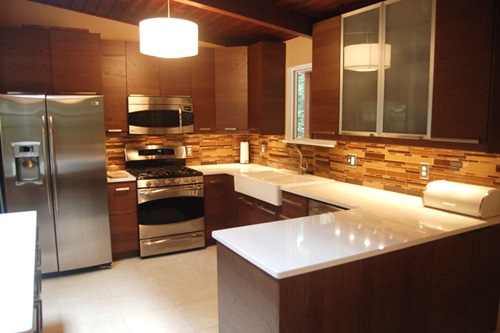No plumbing problem is more common or more frustrating than a clogged drain.
Kitchen sink drains clog most often because of a buildup of grease that traps food particles.
Hair and soap are often at fault in bathroom drains.
Drains can usually be cleared easily and inexpensively, but taking some simple precautions will help you avoid stop-ups. Proper disposal of kitchen waste will keep sink drain clogs to a minimum.
Don’t pour grease down the kitchen sink.
Don’t wash coffee grounds down the sink. Throw them out.
Be sparing with chemical cleaners, particularly if you have brass, steel, or cast-iron traps and drainpipes; some caustic chemicals can corrode metal pipes.
If used no more than once every few months, cleaners containing sodium hydroxide or sodium nitrate can be safe and effective.
Clean floor drain strainers. Some tubs, showers, and basement floor drains have strainers that are screwed into the drain opening. You can easily remove these strainers and reach down into the drain with a bent wire to clear out accumulated debris. And be sure to scrub the strainer.
Clean pop-up stoppers in the bathroom sink and the tub regularly. Lift out sink pop-ups once a week and rinse them off.
Every few months, remove the overflow plate on a tub and pull up the pop-up assembly to reach the spring or rocker arm. Remove accumulated hair and rinse thoroughly.
Keep the sewer pipes from the house free of tree roots that may invade them. If roots are a particular problem in your yard, you may need to call in professionals once a year or so to clear the pipes. They’ll use an electric auger to cut out the roots.
Flush the drain-waste and vent systems whenever you go up onto your house roof to clean out downspouts or gutters. Run water from a garden hose into all vents, giving them a minute or two of full flow.
Copyright to the original publisher for www.allabouthome.com
Collected and published by Arms &McGregor International Realty® editorial team. Get in touched with us at
[email protected]

